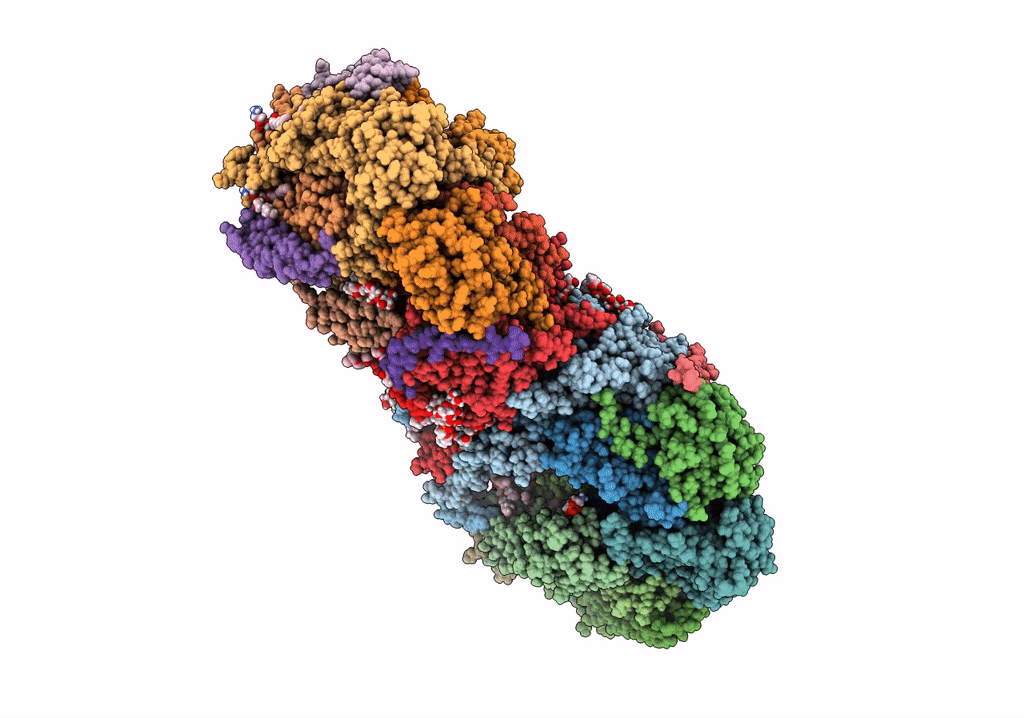
Deposition Date
2021-12-13
Release Date
2022-05-18
Last Version Date
2024-10-23
Entry Detail
PDB ID:
7QHO
Keywords:
Title:
Cytochrome bcc-aa3 supercomplex (respiratory supercomplex III2/IV2) from Corynebacterium glutamicum (as isolated)
Biological Source:
Source Organism:
Corynebacterium glutamicum ATCC 13032 (Taxon ID: 196627)
Host Organism:
Method Details:
Experimental Method:
Resolution:
3.10 Å
Aggregation State:
PARTICLE
Reconstruction Method:
SINGLE PARTICLE


